Key Takeaways
- Family Connection: Capybaras and guinea pigs are both part of the Caviidae family, making them distant relatives.
- Social Structures: Both species are social animals that live in groups. Capybara groups typically consist of around ten individuals, including dominant males, several females, subordinate males, and their offspring.
- Activity Patterns: Similar to guinea pigs, capybaras are mostly active during the day and take intermittent naps while remaining alert to potential threats.
- Conservation Status: Capybaras are not currently classified as endangered. However, they face threats from deforestation and poaching, as they are hunted for their meat and hides.
Capybaras, also sometimes referred to as giant guinea pigs, are the largest rodents on Earth! Even though they’ve been given that nickname, it probably begs the question: Are capybaras related to guinea pigs? They even resemble each other a little bit, so what is the truth?
Are capybaras related to guinea pigs?
Generally, the capybara is compared to many different animals, including beavers and actual pigs, whether it’s because of their behavior, their dietary needs, or their general appearance.
There are two types of capybaras, with one being quite a bit larger than the other. Capybaras can be around 4.5 feet long and can weigh up to 180 pounds, while the lesser capybara can be around 3 feet long and 60 pounds. Even based on these measurements alone, we can tell that guinea pigs are much smaller than these giant rodents by a lot!
Capybaras have longer, light brown hair, with faces that look like a mix between a beaver and a guinea pig! They have no tail, and their toes are slightly webbed, which contributes to their great ability to swim and is helpful because they spend most of their time in water.
A few of their facial features resemble that of a guinea pig, they have some similar dietary requirements, and they’re distantly related, but not by much! If you’d like to learn more about wild guinea pigs and where they came from, check out this post.
Where do capybaras live?
These giant rodents can be found in the Americas, usually east of the Andes mountains near bodies of water such as ponds, lakes, and any similar areas. Part of their affinity for swimming is out of necessity, as they have dryer skin and need the water to keep them hydrated and comfortable.
What’s interesting about capybaras is the fact that most of their features, such as their eyes, ears, and nose are all located on the upper parts of their head. According to the San Diego Zoo, this helps them keep most of their body submerged underwater, which is what has led to comparisons to hippos. Because they live in climates that tend to be on the warmer side, spending most of their time in the water and mud is beneficial for them because they can stay cool, especially in the spring and summer months.
What do capybaras eat?
Because capybaras live in Central and South America in swamps and other grass regions near bodies of water, they eat plants and vegetation that grows in those areas. They eat things like grass and water plants that grow nearby.
Adult capybaras eat anywhere from six to eight pounds of grass per day. If it’s a dryer season, capybaras will eat other types of plants and wild vegetables, such as reeds, grains they find in the area, melons, and squash.
Similar to guinea pigs, capybaras will eat their own poop to fully extract the nutrients from their food a second time. Because their food consists of wild vegetation, those plants tend to be harder to digest, which means eating one time, then eating their poop the second time around will help them get the nutrition they need.
Capybaras not only eat their own poop, but they’ll regurgitate their food that they’ve chewed and swallowed to chew a second time because of the toughness of the plants they usually eat. Capybaras really try to get the most out of all of their food!
Capybaras in captivity have a diet that is very similar to that of a pet guinea pigs—they eat specialized biscuits (similar to the idea of your guinea pig’s pellets), assorted vegetables and other greens, and hay!
Capybara Families
Similar to guinea pigs, capybaras will live in small groups or herds, usually made up of around ten! These groups always include dominant males and a couple of females, subordinate male capybaras, and any babies and young that they may have. Similar to guinea pigs, capybaras are mostly active during the day, and sleep on and off while staying alert for threats.
Because they live in groups, they’re able to keep each other safe and keep an eye out for danger and threats and warn each other. It’s especially important that there are several capybaras to keep watch on the young ones, because they often fall victim to their predators—these include animals like eagles, large snakes, and eagles. Unfortunately, humans hunt them as well.
Are capybaras endangered?
According to the San Diego Zoo, capybaras are not classified as endangered. However, like many animals in the wild, they are threatened by deforestation and poaching. Hunters usually kill them for their meat and for their hides to make leather and leather goods. Similar to guinea pigs some 3,000 years ago and today, capybaras are utilized as sources of food in some places and their cultures.

The bottom line: Capybaras and guinea pigs are related, but distantly!
We think even imagining a guinea pig next to a capybara is a funny image, as the size differences are so drastically different.
Because capybaras are wild animals, there’s not really a chance that you’ll be able to keep them as a pet, but based on their lifestyle and their needs, it’s highly likely that it wouldn’t be too different from taking care of your guinea pigs!











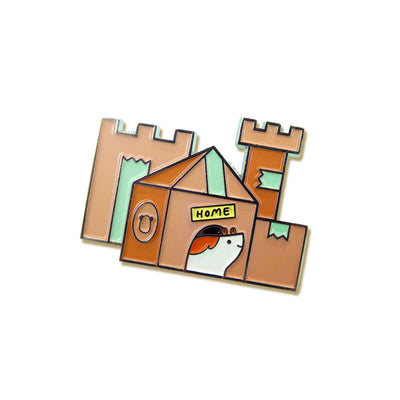

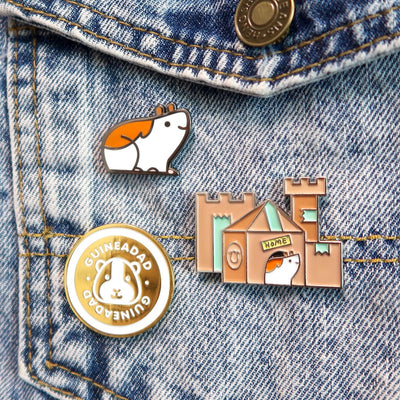









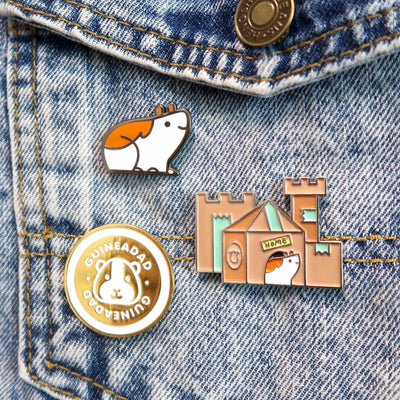


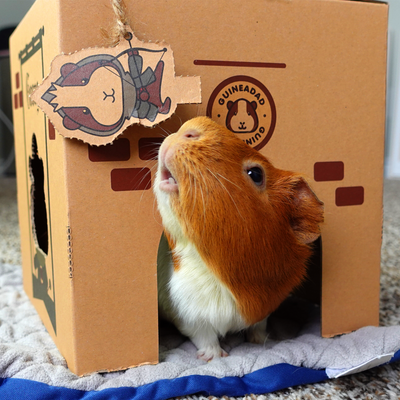


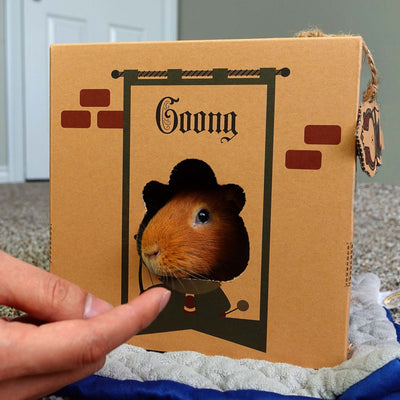



1 comment
Just saw the website logo; we take back everything we said. This article is the new Consitution.